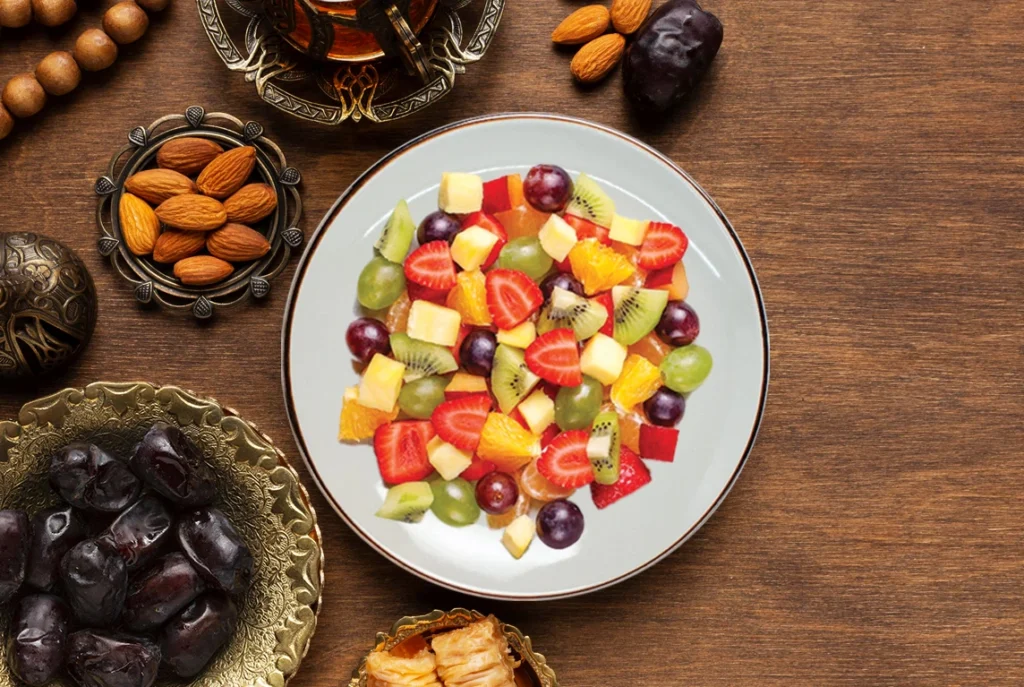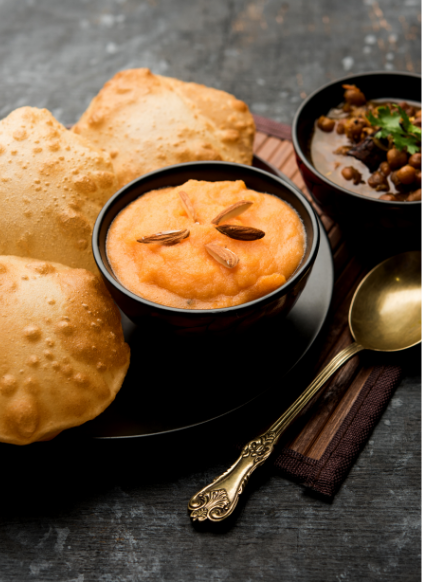Ramadan and Fruit Chaat: A delicious way to break your fast
Muslims observe Ramadan in large part by fasting from dawn till dusk. This is both a sign of compassion and thanks for everything they have during this holy month and a sign of their commitment to their religion. However, breaking the fast, which takes place twice daily at a meal before sunrise (suhoor) and another after sunset, is very significant. (Iftar).
There are several classic Ramadan meals available now. People also have customs surrounding the dishes they make for their Ramadan meals, which tend to vary by location and nation. But it can be helpful to start with some of the common Ramadan recipes loved by observers worldwide if you’re seeking cooking inspiration or are simply curious about what conventional Ramadan meals might involve.
Table of Contents
What is chaat?
Chaat or Chat is an Indian savory snack meant to be licked. Fresh or cooked vegetables, puffed rice, puris, bhel mix, or fruits can all be used to make them. Fruit chaat is a popular street snack from India that combines fresh fruits and spices.
After having lip-smacking chaats, a bowl of mixed fruits with chaat masala is precisely what you need and it’s one of the best fruit chaat recipes. Fruit chaat can be consumed as a dessert after a substantial dinner or as a snack on a hot day.
Which fruits to use?
There are no restrictions when it comes to fruit chaat ingredients; the tastiest fruit is the one you have on hand.
Bananas, apples, pears, grapes, mangoes, guavas, and pomegranates are among the fruits that are used the most frequently. Although I wouldn’t claim that fruit is forbidden, some fruits, including figs and avocados, aren’t commonly used. I also tend to steer clear of fruit with much water, such as watermelon and cantaloupe.
Despite being an optional ingredient, chickpeas are frequently utilized in traditional dishes. Chickpeas provide some protein as well as balance the savory and sweet flavors.
Why fruit chaat for iftar?
Muslims have a very special place for fruit chaat in their hearts during Ramadan. It is said that now is the perfect time to demonstrate greater charity, kindness, and compassion. During this month, people often celebrate by creating festive meals. Make your Ramadan more enjoyable, meaningful, and unforgettable by treating yourself and your loved ones to this treat!
The classic fruit-based sweet delicacy that melts on your tongue. After just one bite, we bet you won’t be able to stop—one of the most elegant and straightforward recipes for a snack to prepare for your Iftaar feast. You’re unsure of the ingredients. The best fruit chaat may be made at home with just a few fruits, cream, black pepper, salt, and sugar.
As a child, I don’t recall breaking a Ramadan fast without cream fruit chaat. It remains the one item I usually serve at the Iftar table.
Fruit chaat is not only the ideal way to receive a variety of fruits in your little window of time after sundown, but it also serves as a counterbalance to all the savory and filling meals that are frequently eaten for Iftar.
Secret to great fruit chaat
I’ve tried a lot of different fruit chaats. (Just one month of dawats will make you an expert on what it tastes like.)
While having a decent chaat masala is important, I’ve discovered that the best fruit chaats all feature orange juice—or any other fruity juice—as their secret ingredient.
The best option is freshly squeezed juice, but you may also use anything you have on hand, including mango juice, and juice blends like orange pineapple mango.
Fruits can help you rehydrate after a fast because they are high in water content. Even though you should be drinking during your entire fast, most people experience mild dehydration due to difficulty meeting their fluid requirements only through drinking. Fruits also include vitamins and minerals in them. Although they include simple carbohydrates, fiber helps to moderate digestion so that your body doesn’t suddenly get overloaded with sugar.
Eating processed food or meals heavy in simple carbohydrates might cause the refeeding syndrome, which is when fluid imbalances happen after fasting, especially if you eat too much too soon after a lengthy fast. Fruit’s high water and fiber content slows the release of glucose into the bloodstream, reducing the risk of refeeding syndrome.
Low-sugar fruits like berries, melons, and grapefruit are the best to eat after a fast. These fruits are abundant in water and vitamin C.








